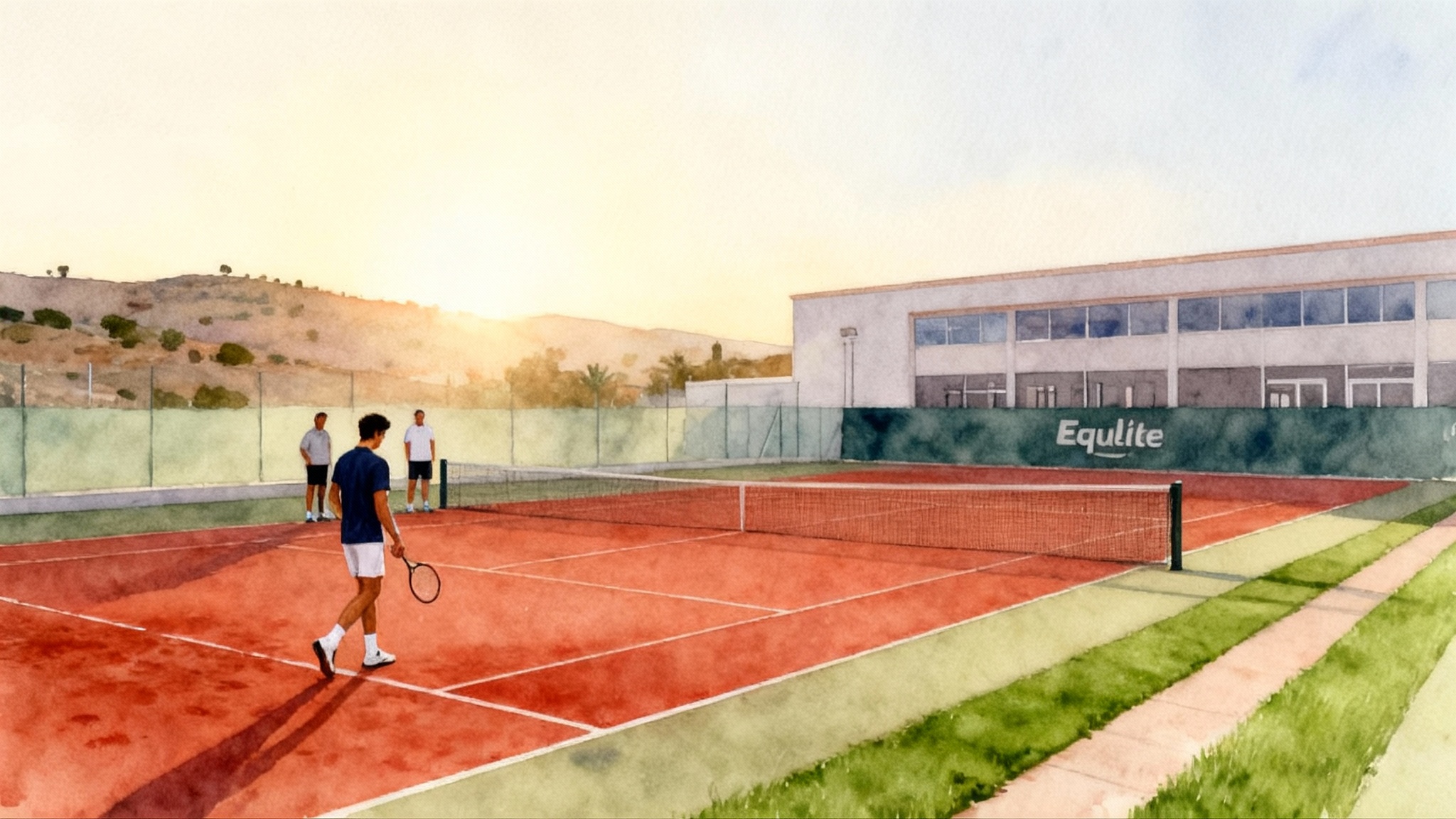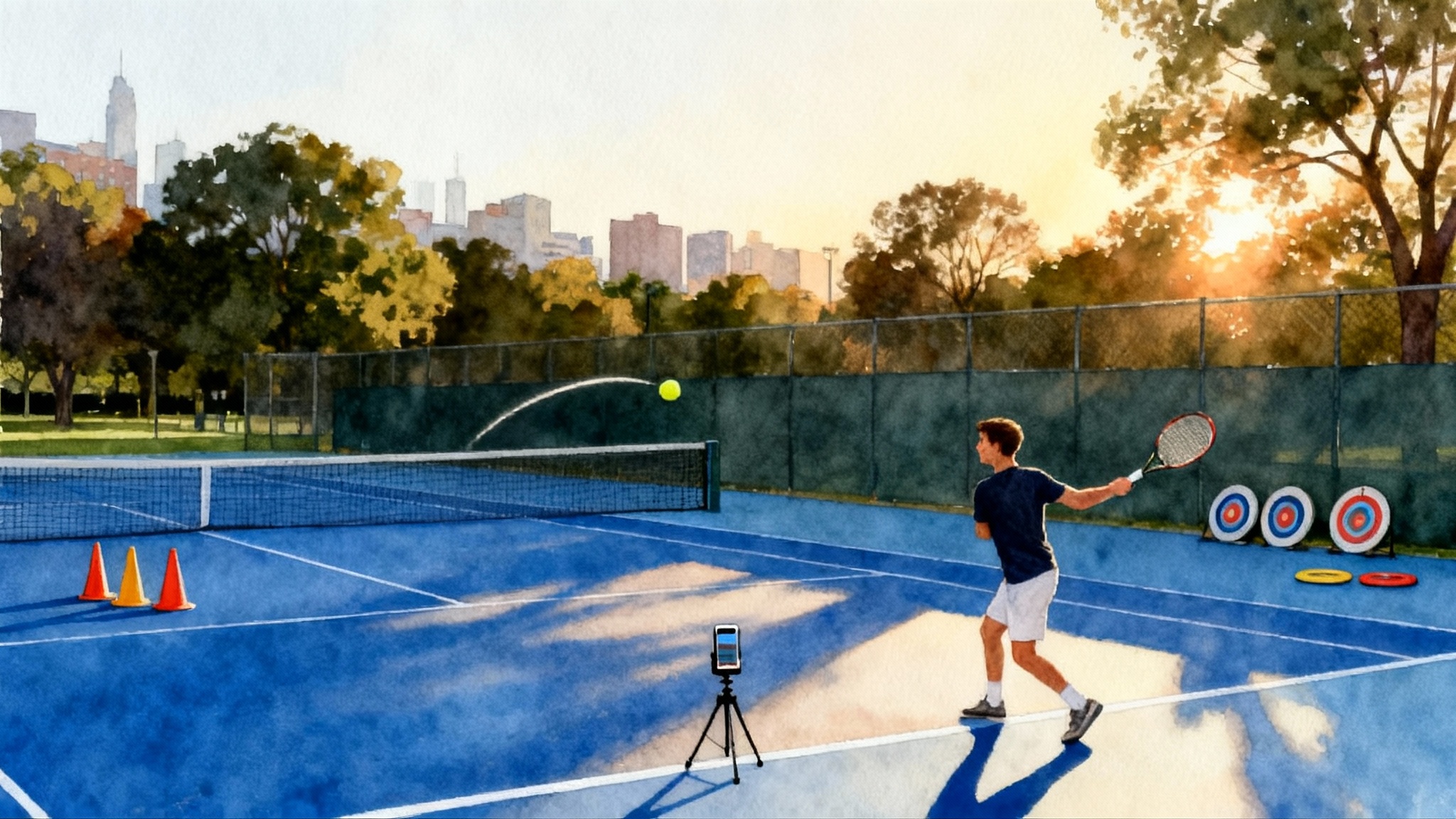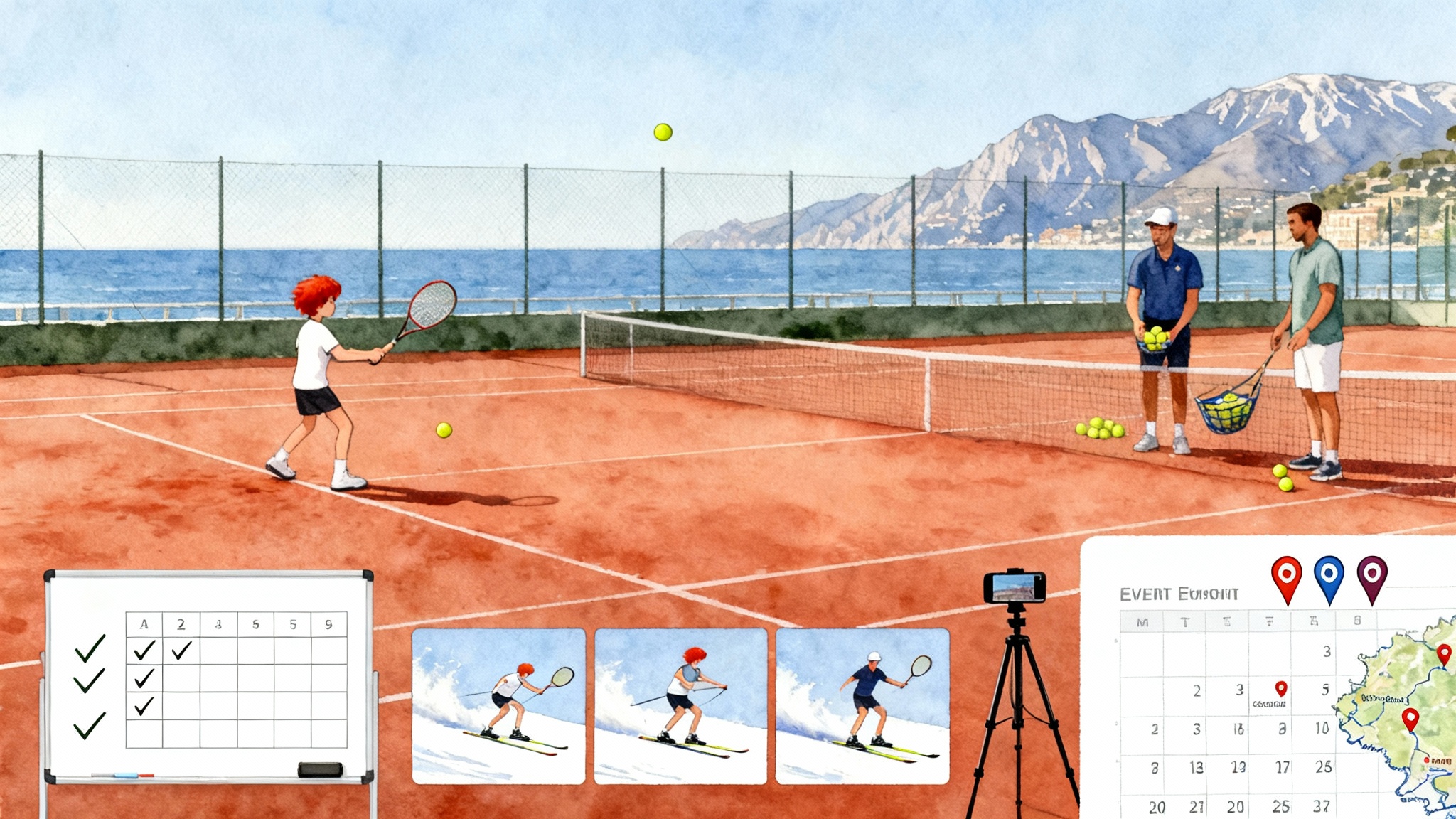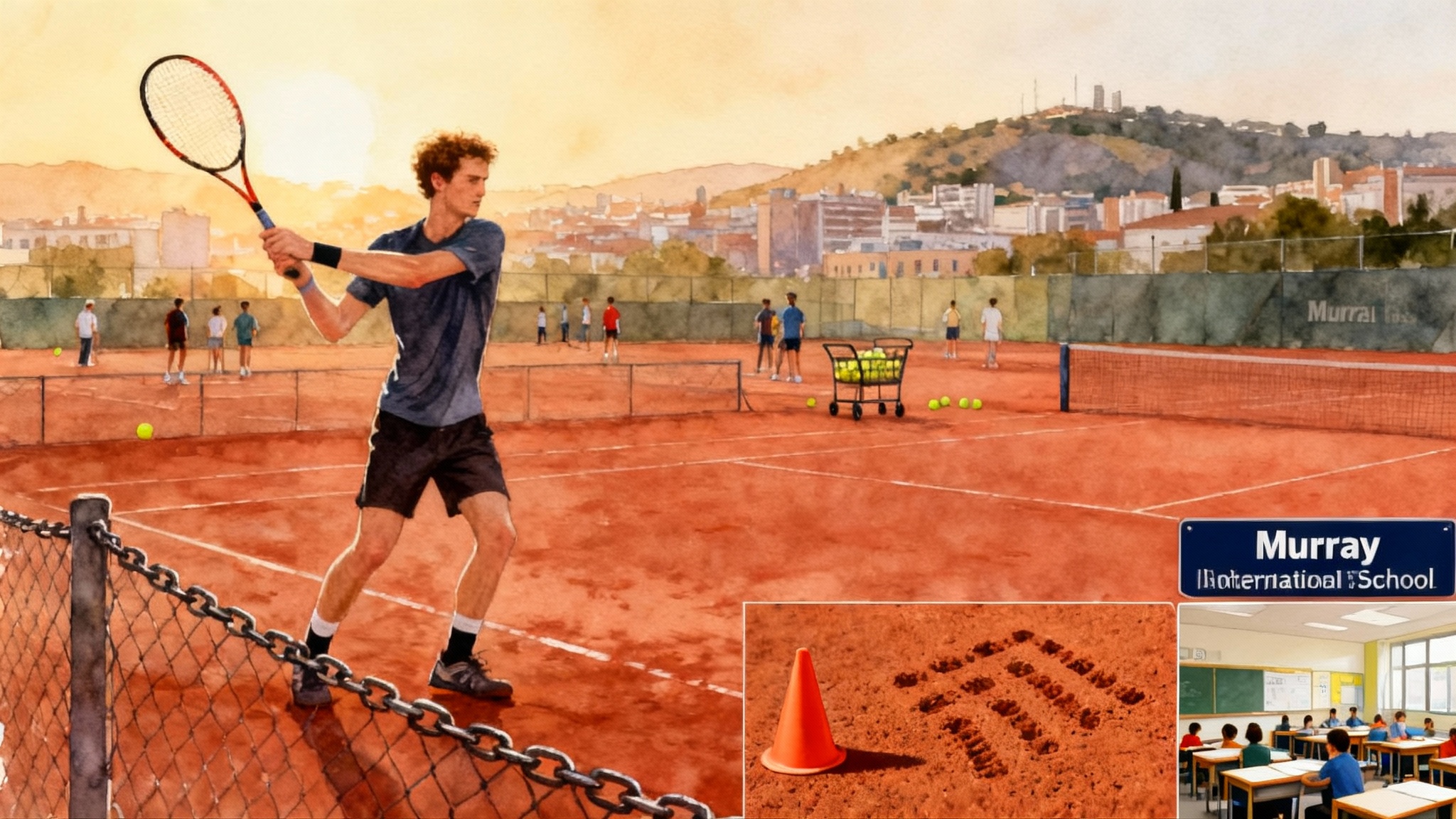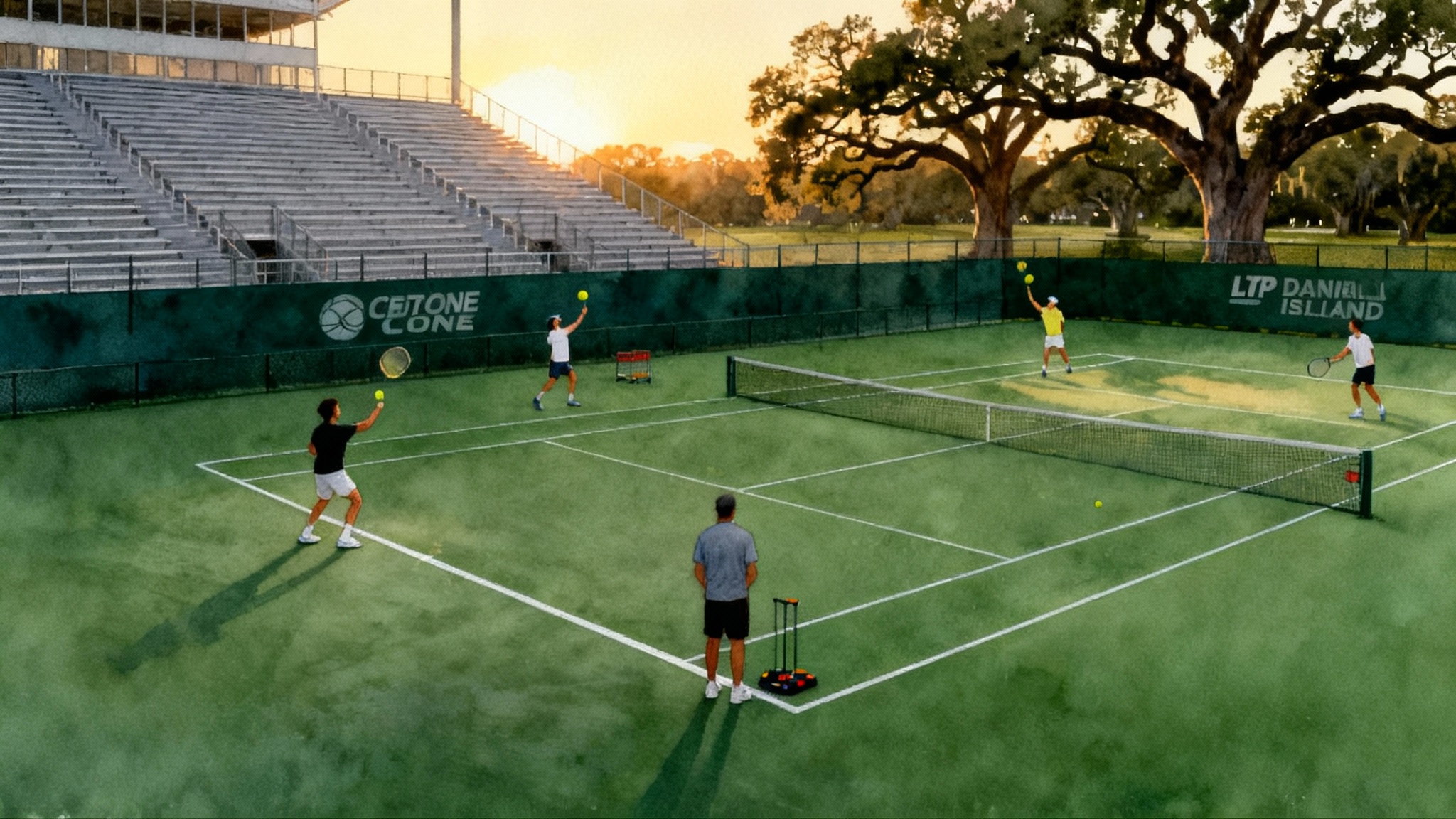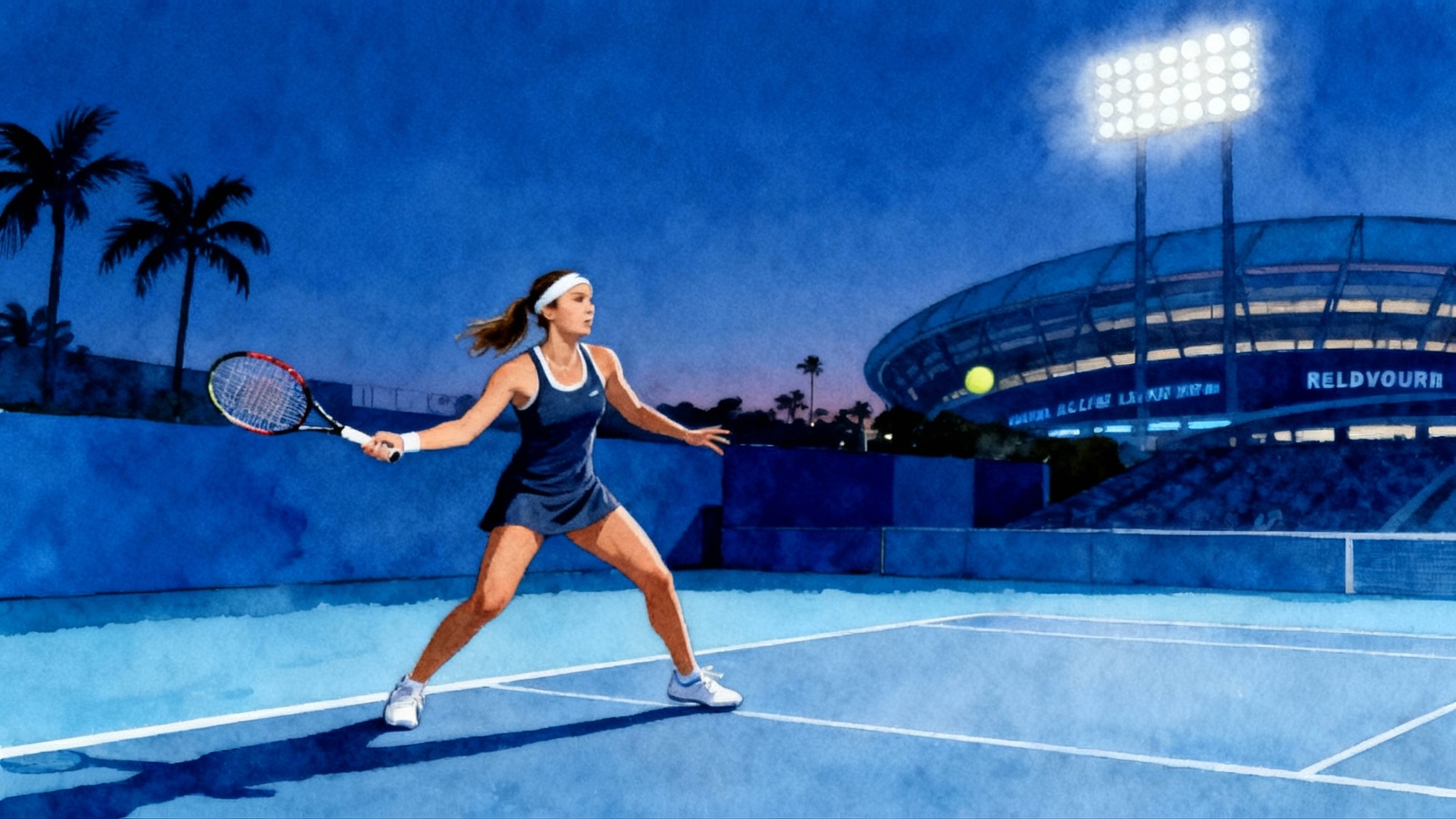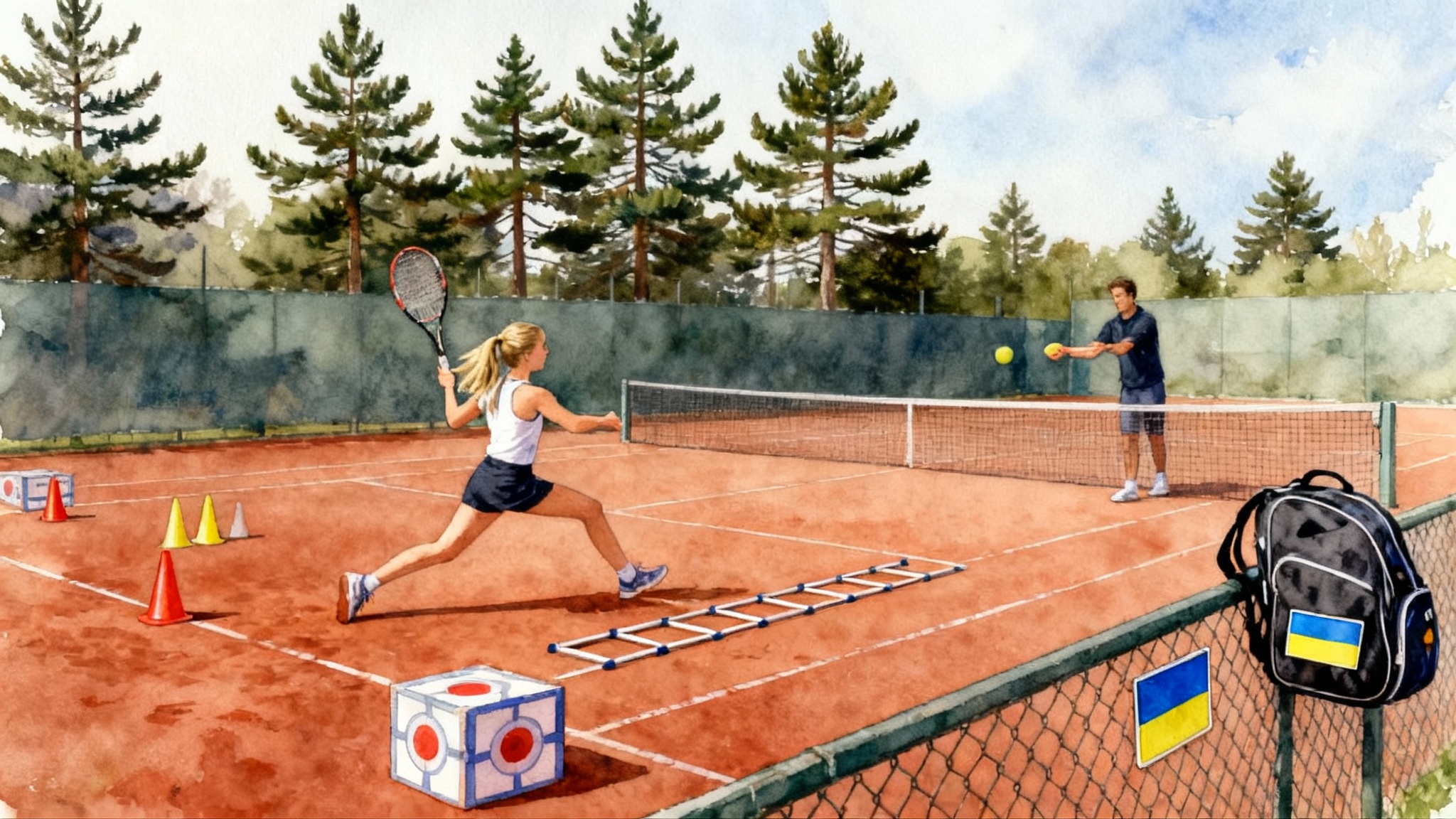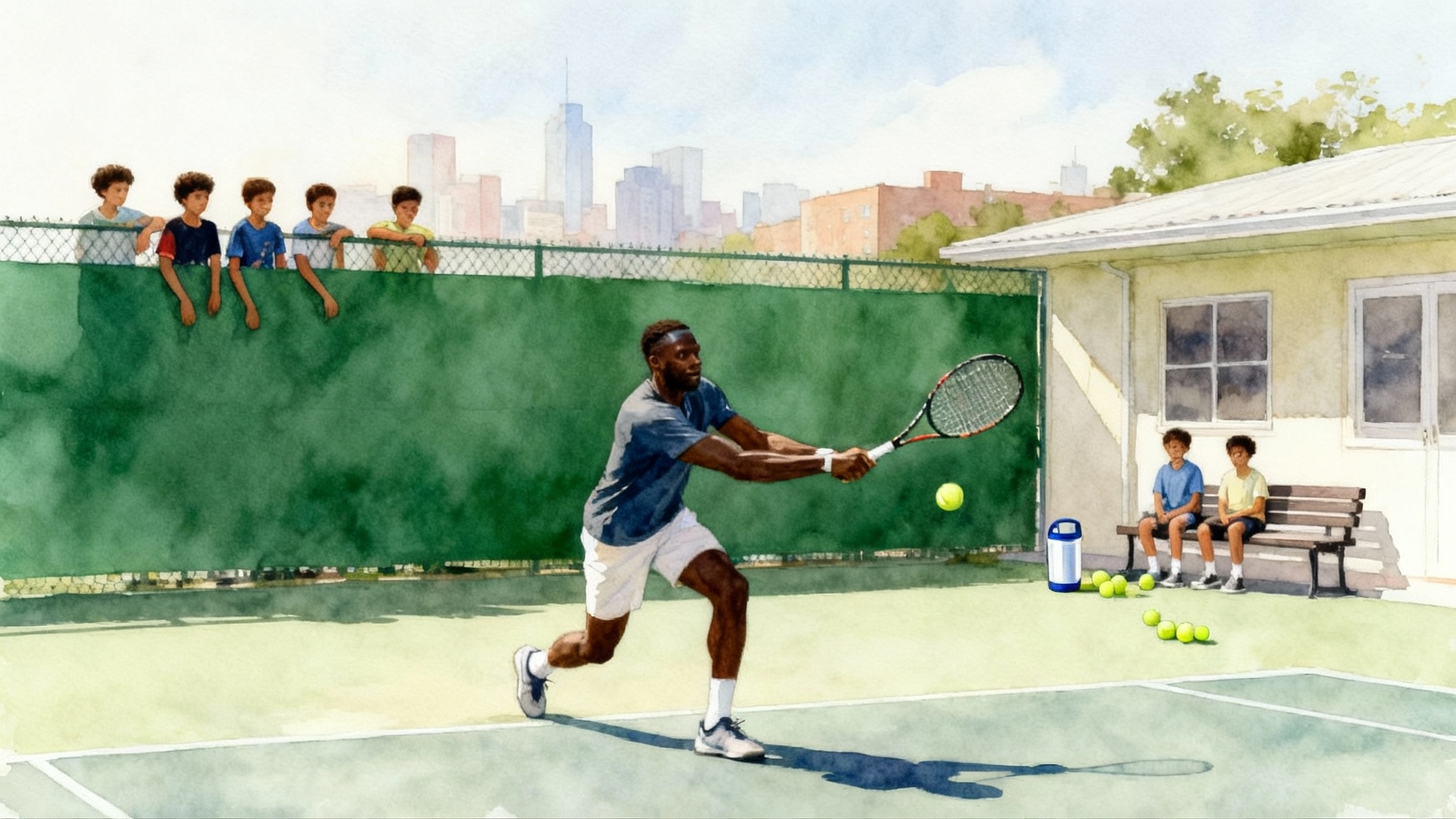How Elite Tennis Center and All In Academy shaped Mirra Andreeva
Mirra Andreeva’s journey ran from Sochi to Cannes and on to the Côte d’Azur, where Elite Tennis Center and All In Academy, together with coach Conchita Martínez, refined her game and schedule into a 2025 WTA 1000 breakthrough. Here is what families can learn.
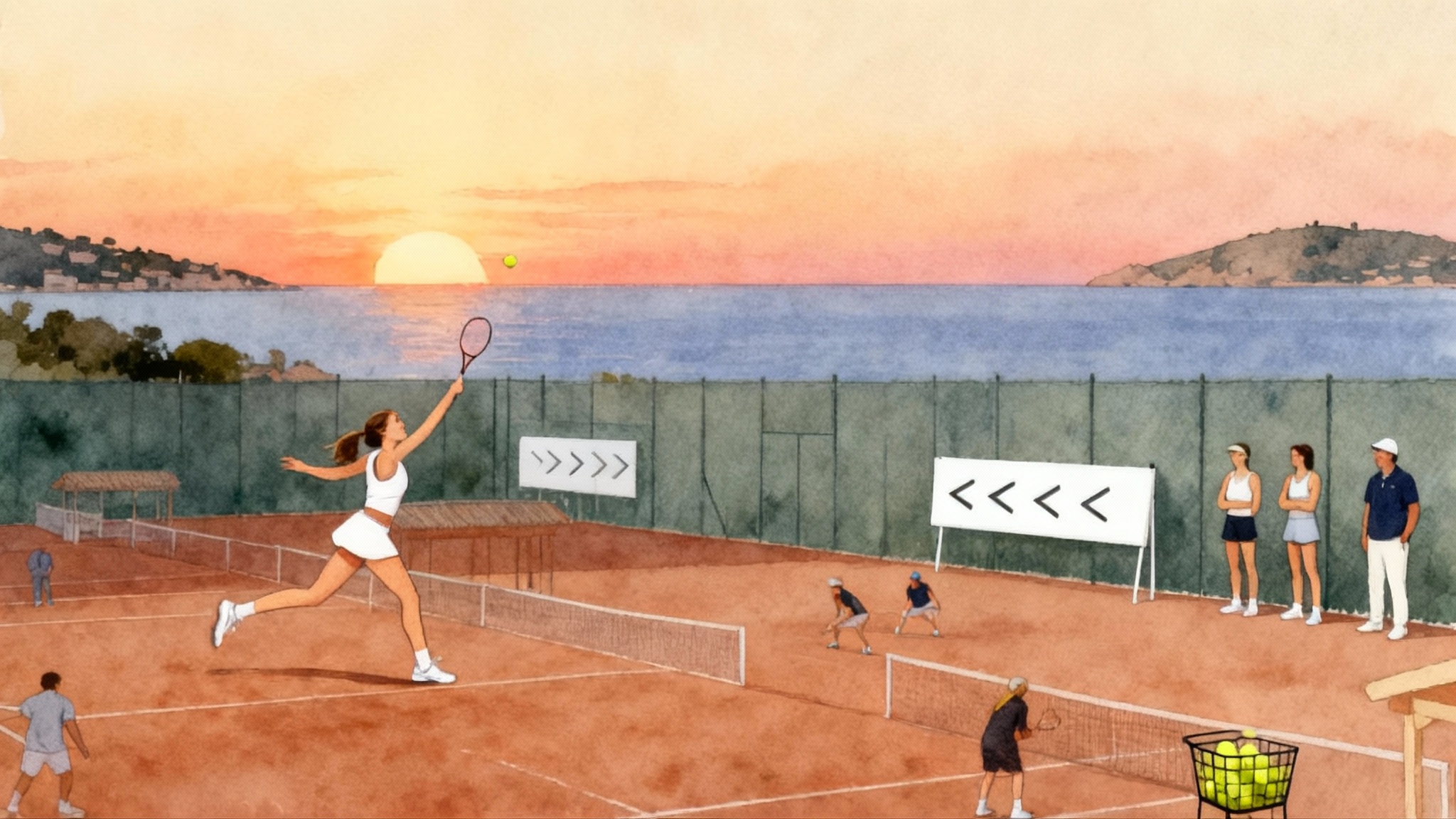
From Sochi to the French Riviera
Every great tennis story is really a map. For Mirra Andreeva, the pins on that map track a precise route: the family shift from Siberia to Sochi for better weather and court time, the move to Cannes to train at the Elite Tennis Center, and the later switch along the Riviera to All In Academy, where Conchita Martínez took charge of her day to day development. That journey, plus a Europe‑centric match schedule and tightly managed small‑group coaching, set the stage for her 2025 surge that included becoming the youngest WTA 1000 champion in Dubai, then backing it up two weeks later with the Indian Wells title.
The path matters because environment shapes habits. At each stop, Andreeva and her family made specific choices about surfaces, coaching ratios, school structure, and travel footprints. None of these choices is flashy. All of them compound.
Why Cannes, and why Elite Tennis Center came first
Elite Tennis Center in Cannes offered Andreeva a bridge between promise and the professional grind. The center is known for hands‑on coaching and a practical culture that values repeatable habits over quick fixes. What this looks like for a teenager:
- A learning loop that runs through morning fundamentals, short competitive sets, and end‑of‑day video review. The loop reduces the gap between practice and match behavior.
- Multi‑surface access. On the Riviera you can hit hard in the morning and clay in the afternoon, which forces a young player to solve problems in different tempos.
- Small squads. A pod of three or four players on two courts lets a coach run situational points while a second coach tracks patterns. The ratio matters more than any single drill.
Elite was a deliberate middle step: more robust than a local club, flexible enough to individualize. That balance made it a logical launchpad to the next phase, similar to the Equelite approach with Alcaraz.
The switch to All In Academy and the Conchita Martínez effect
A move between academies is not a statement of failure. It is a statement of timing. When All In Academy became Andreeva’s base, the goal was not to reinvent her, but to sharpen what already worked and install a tour‑ready operating rhythm. The academy’s environment, located on the Côte d’Azur, is built for full‑time pros and ambitious juniors who need a tight circle, fast feedback, and integrated support. Conchita Martínez brought the final ingredients: clear tactical blueprints, reliable between‑point composure, and the kind of practice standards that travel well.
Two elements defined the change:
-
A unified language for patterns. Instead of generic slogans, sessions codified point plans by score, return depth, and opponent style. “Backhand first strike on plus one” is something you can rehearse and measure.
-
A tighter weekly cadence. Strength work early in the week, live‑ball intensity in the middle, and pre‑match dose‑response sessions late in the week to simulate the next event. It is predictable enough to settle nerves and adaptable enough to handle a surprise late match. Publicly, the team positioned the switch as a professional base camp, not a marketing pivot, and the academy confirmed All In Academy training with Martínez as her coach. It is a simple model: a small room, a short list, and a high bar.
How a Europe‑centric schedule accelerated the leap
Andreeva’s calendar favored Europe for most of the year. That choice minimized jet lag, protected practice volume, and increased the number of high‑quality, short‑notice match reps she could accept. It also kept her close to her base, which meant the same coaches who designed her progressions could adjust them the very next day.
The flow looked like this:
- Spring clay swing within train or short‑haul distance, with quick turnarounds to the academy for micro blocks of work.
- Hard‑court tuneups with surfaces that match the target events. The Riviera offers both slower and faster acrylic courts, so a change in speed is a change in court, not in continent.
- Stacked opportunities. Challengers and tour events within a few hours create backup options if a main draw closes early. You keep competing without a multi‑day travel reset.
The compounding effect shows up in performance. When the stakes rose in February and March 2025, she arrived with a body that had avoided too many time zones, a game built on recognizable patterns, and a team that could solve problems between rounds. The breakthrough was not a bolt from the blue. It was a scheduled arrival.
What small‑group coaching changed in practice
Families often picture elite training as a private‑court bubble. Andreeva’s development shows the opposite: the power of carefully curated small groups, much like the playbook in the Piatti Academy forged Sinner’s rise.
- Role clarity: In a three‑player group, each practice assigns a primary, a sparring partner, and an observer with a clipboard who tracks serve targets and rally lengths. The observer rotates every 25 minutes. Everyone learns, even when not hitting.
- Constraint drills: If the day’s theme is “backhand cross to backhand line, then change,” the coach sets one gate for depth and one for line changes. Points count only if they pass the gates. It is measurable and competitive.
- Recovery by design: In small groups you can sequence work so that one player’s high‑intensity block coincides with another’s low‑intensity technical window. You get quality without exhausting the room.
Small groups are also honest. In a room of three you cannot hide a flat day. That accountability transfers to matches, where self‑management is half the sport.
The support team that travels
Conchita Martínez is the lead, but results often hinge on infrastructure. The core pieces that made a difference for Andreeva are available to any serious family with planning:
- A technical lead who owns the match plan and the post‑match debrief. The head coach keeps the thread, even if assistant coaches or hitting partners rotate.
- A performance coach who can travel locally. If your base is on the Riviera, the same strength coach can supervise a pre‑round activation in Nice on Tuesday and a recovery lift back at the academy on Thursday.
- Access to an on‑call physio network. You do not need a full‑time hire at 16 or 17. You do need a vetted list with response times and rates.
- One communications channel. Match videos, scouting clips, and wellness notes live in a shared folder. Decisions move faster, and nothing gets lost in group chats.
This is not luxury. It is logistics.
Bilingual schooling on a pro‑track calendar
The family solved school the way they solved tennis: by structure and proximity. The template:
- Choose a bilingual track that prioritizes English for tournament travel and French for daily life. A two‑subject daily minimum keeps the academic habit alive without draining practice energy.
- Block school in two windows. Ninety minutes after the morning session for lighter subjects, and sixty minutes after the afternoon hit for review and assignments. Keep exams in the shorter travel weeks.
- Set a finite syllabus each eight‑week cycle. Tennis calendars change, but curriculum creep is what burns out teenagers. A capped list wins.
Families worry that school will always lose to sport. The real risk is unmanaged overlap. Treat academics like a second training block, scheduled and scored.
When to change academies: a practical test
Switching centers is emotional. Here is a filter to make it rational.
- Evidence of plateau: If a player repeats the same match errors three events in a row and the intervention is still the same drill, you are not solving the right problem.
- Role confusion: If three different coaches are giving three different messages within one week, it is time for a single tactical voice.
- Travel friction: If the academy location adds more flights and hours than the tournaments you play, the base is in the wrong place.
- Trial block first: Do a two‑week paid trial at the new academy. Require written session plans and a post‑block report that includes two technical priorities, one tactical priority, and one lifestyle change. Compare that to your current plan.
A change should lower noise and increase clarity. If it does not, stay.
Building a right‑sized team
You do not need a ten‑person entourage to move the needle. Start narrow and scale only when constraints appear.
- Start with three roles: head coach, performance coach, and a local physio network. Add a hitting partner for specific weeks rather than as a full‑time hire.
- Define communication rules: head coach owns the match plan; performance coach owns readiness and recovery; player owns sleep, hydration, and daily reporting.
- Share calendar assumptions: agree on the number of peak events per quarter, the target surfaces, and realistic travel limits. Place the big rocks first.
Costs matter. A European base with short‑haul travel limits per diems and time away. Shared accommodation between peer families for two blocks per year can cut lodging costs while preserving training quality.
Designing a Europe‑centric calendar for growth
The goal is not to chase points; it is to scaffold development.
- Build around clusters: two or three events within a 500‑mile radius, then a return to base for a three‑day mini block. Repeat.
- Match the surface to the next peak. Before a North American hard‑court swing, schedule hard‑court events in Europe that mirror those speeds.
- Leave two open entries per quarter. Form spikes happen. Give yourself room to enter a higher tier when the level clicks.
A schedule like this created the conditions for Andreeva’s sprint through February and March 2025. The wins looked sudden. The preparation did not.
What parents can copy the next four weeks
- Film two full practice sets and one match, then label ten points where the first short ball appears. If patterns are unclear, ask the coach for one serve pattern and one plus one pattern to anchor the next two weeks.
- Run a two‑week microcycle: Monday strength plus technique, Tuesday live points, Wednesday flush hit and school block, Thursday live points with score constraints, Friday pre‑match dose, weekend competition. Review on Sunday with notes from player, coach, and parent, each limited to five bullet points.
- Audit your base. Count flight hours in the last eight weeks, then calculate hours on your primary surface. If the ratio is upside down, adjust the calendar or consider a base closer to your main circuit.
These steps are boring. They are also the difference between hopeful and professional.
What this pathway tells us about development
Andreeva’s rise is not proof that there is one best academy. It is a case study in matching environment to phase of growth.
- Early phase: seek breadth. Multiple surfaces, small groups, and a coach who loves fundamentals.
- Transition phase: seek precision. A single tactical voice, measurable drills, and a schedule that keeps the player near home base.
- Launch phase: seek reliability. A team that travels lightly, a calendar that clusters events, and a plan that survives a bad hitting day.
The names are helpful because they make the ideas concrete. Cannes means small groups and multi‑surface reps. All In means a pro‑ready cadence and a head coach who has been there, made the decisions, and can make them again under pressure.
The bottom line
Families do not control talent. They control environment, travel, coaching ratios, and school structure. Mirra Andreeva’s route from Sochi to Cannes and across the Riviera shows how those levers translate into results. Choose a base that fits your circuit. Keep the squad small and the sessions specific. Treat school like a second training block. Then let time compound the work.
Do that, and when a February final turns into a title and a March run becomes a second trophy, it will not feel like a miracle. It will feel like a plan that finally reached its checkpoint.
